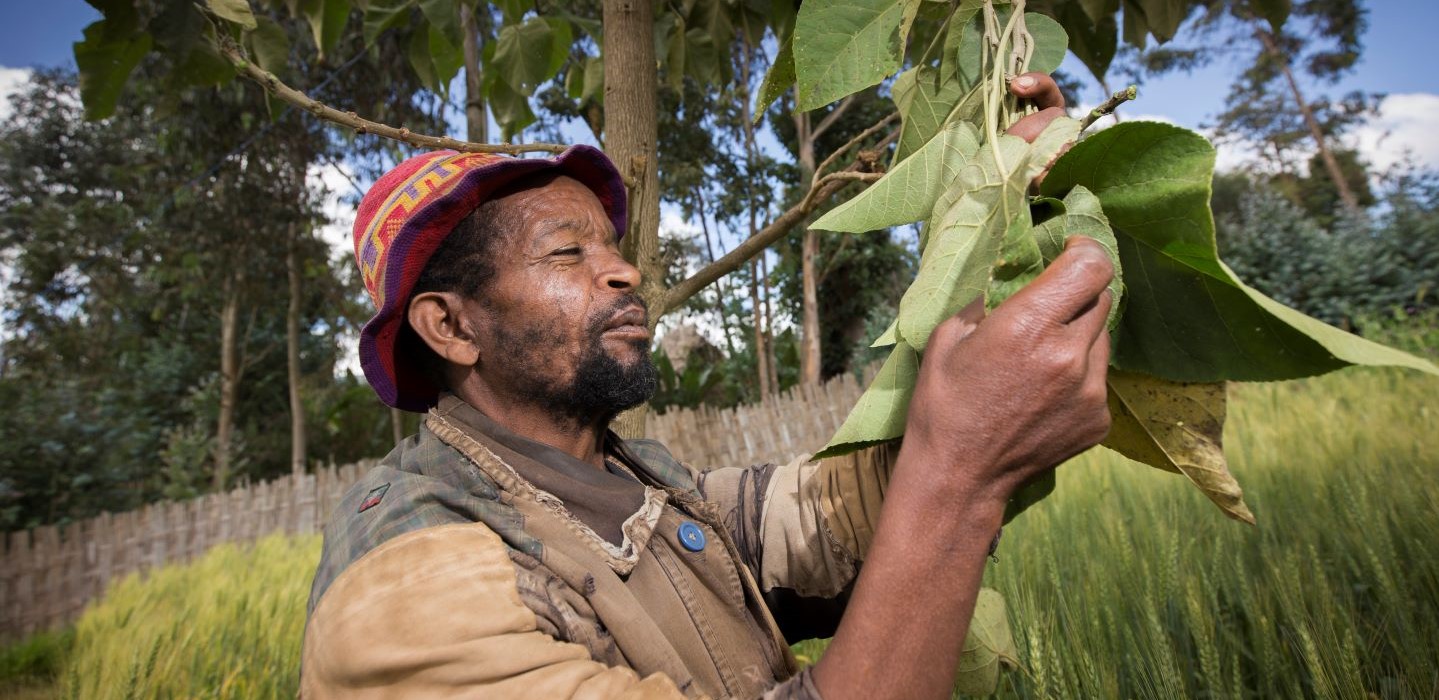Nutrition-sensitive investments for resilient food systems: Lessons from Ethiopia
IFAD Asset Request Portlet
Asset Publisher
Nutrition-sensitive investments for resilient food systems: Lessons from Ethiopia
Estimated reading time: 4 minutes
Although there’s been notable progress in reducing malnutrition globally, the world is still off-track on Sustainable Development Goal 2: ending malnutrition in all its forms by 2030. Indeed, 9 per cent of the world’s people were undernourished as of 2020, and the COVID-19 pandemic added at least 132 million more people to this count.
Good nutrition for all is a moral imperative, and it also underlies our global efforts to achieve sustainable development. It has profound effects on individual health and well-being, on resilience, and on people’s ability to learn, earn and build livelihoods. What’s more, it’s a sound economic investment: for every dollar invested in nutrition, 16 dollars are generated in returns.
It’s no wonder, then, that more and more of our rural development projects are focusing on nutrition as a way to optimize their impact. Our work in Ethiopia exemplifies this.
Mainstreaming nutrition in IFAD’s investments in Ethiopia
Despite improvements over the past two decades, food insecurity and malnutrition remain major issues in Ethiopia. Climate change is exacerbating pre-existing pressures on food security, and 37 per cent of young children still suffer from chronic malnutrition.
IFAD channels its development investments in Ethiopia to small-scale farmers, agro-pastoralists, and pastoralist communities – the country’s primary food producers. In our work with them, we seek to build their agency and thereby create sustainable food systems. Improving nutrition is an important part of this work.
We take a holistic approach to nutrition, in which we invest in both access to nutritious foods, and their utilization. On one hand, we try to increase incomes and food production at the household and market level, and on the other, we help project participants build their nutritional awareness and develop healthier eating patterns, especially by empowering women.
Our colleagues identify entry points for effective nutrition interventions, ensure that those interventions are clearly laid out and well understood, and make sure they have a clear means of achievement. They then measure the impacts of those interventions on nutrition outcomes.
Take, for instance, the IFAD-funded PASIDP II project. It builds upon its predecessor PASIDP, which invested in small-scale irrigation schemes to increase local incomes, agricultural productivity, and ecosystem resilience. Nutrition wasn’t a significant component of its initial design, but at its midterm review, our colleagues recognized that adding nutrition-focused interventions would bolster the project’s expected effects.
PASIDP II uses irrigation development as an entry point for food production. From there, project staff help farmers test and introduce nutrient-dense and marketable crops, such as tomatoes, avocados, mangoes and orange-flesh sweet potatoes. They draw on existing extension services to train farmers using a specially developed nutrition-sensitive curriculum.
Nutrition is now integrated throughout all aspects of the project. This includes the project’s work to empower women and transform gender relations – itself a key driver of food and nutrition security. PASIDP II promotes gender equality by introducing new ways for families to share workloads and make joint decisions on household matters – especially those on food production and purchases.
We also keep a close eye on the progress and success of nutrition interventions. The project has developed a monitoring and evaluation framework to collect data and make timely decisions that improve performance in the present and help us learn for the future.
From projects to policy frameworks
Development projects like PASIDP II are where policy frameworks and development interventions come together. Investments need a supporting policy framework to thrive, and effective policies need to be based on evidence from well-designed and monitored projects.
That’s why we use our experience in nutrition-sensitive investment to help countries conceptualize their food systems transformation in the context of a changing world. IFAD-supported projects like PASIDP II are an ideal way to present these considerations to policy-makers – and they provide empirical evidence of what works.
Recently, we brought our experience to the Food Systems Dialogues convened jointly by Ethiopia’s Ministry of Health and Ministry of Agriculture. At this dialogue, held as part of the run-up to the Food Systems Summit, stakeholders came together to understand the main challenges faced by Ethiopia’s food systems, and to create a roadmap identifying solutions that will ensure everyone in the country can access an adequate and nutritious diet.
The evidence from our projects helped show the central role of small-scale irrigation, increasing access to inclusive rural finance, and strengthening pastoral value chains for improving food security and strengthening Ethiopian food systems. Thanks to this strong showing, IFAD’s strategic priorities for Ethiopia are now among the 22 “game-changing solutions” listed in the country’s Food Systems Transformation Roadmap.
Of course, there’s no one-size-fits-all solution to food systems transformation. Every country and context faces its own food systems challenges, not to mention climate change risks. But by examining the challenges in any given context through a nutrition lens, investing in solutions, and carefully gathering and analysing data on how well these work or could be refined, we can chart a way forward to strong, resilient food systems.
Learn more about IFAD’s work in Ethiopia.
Publication date: 01 March 2022